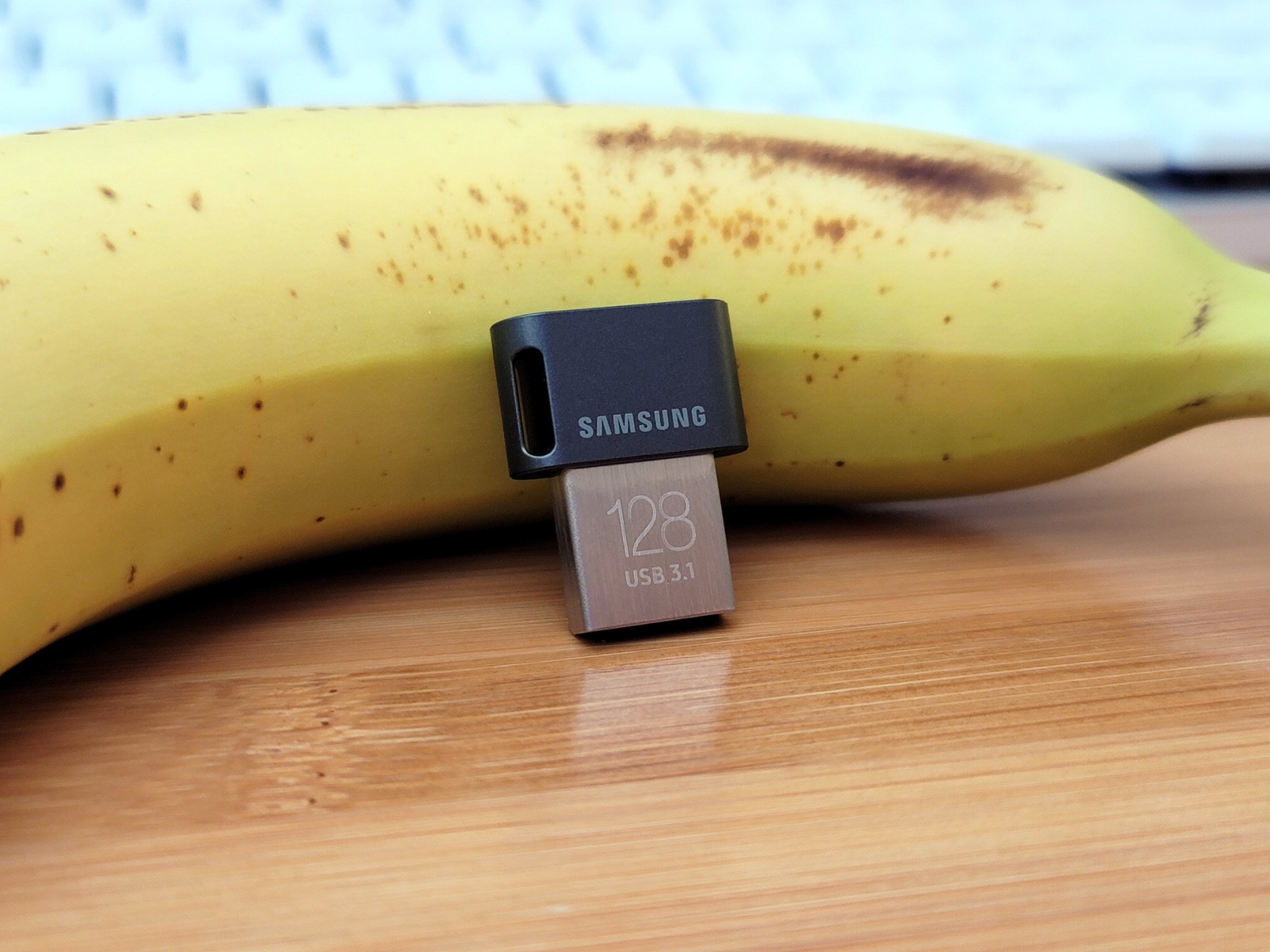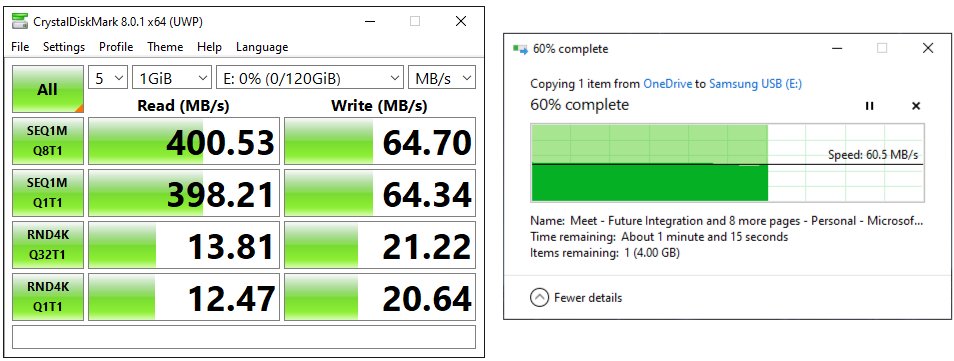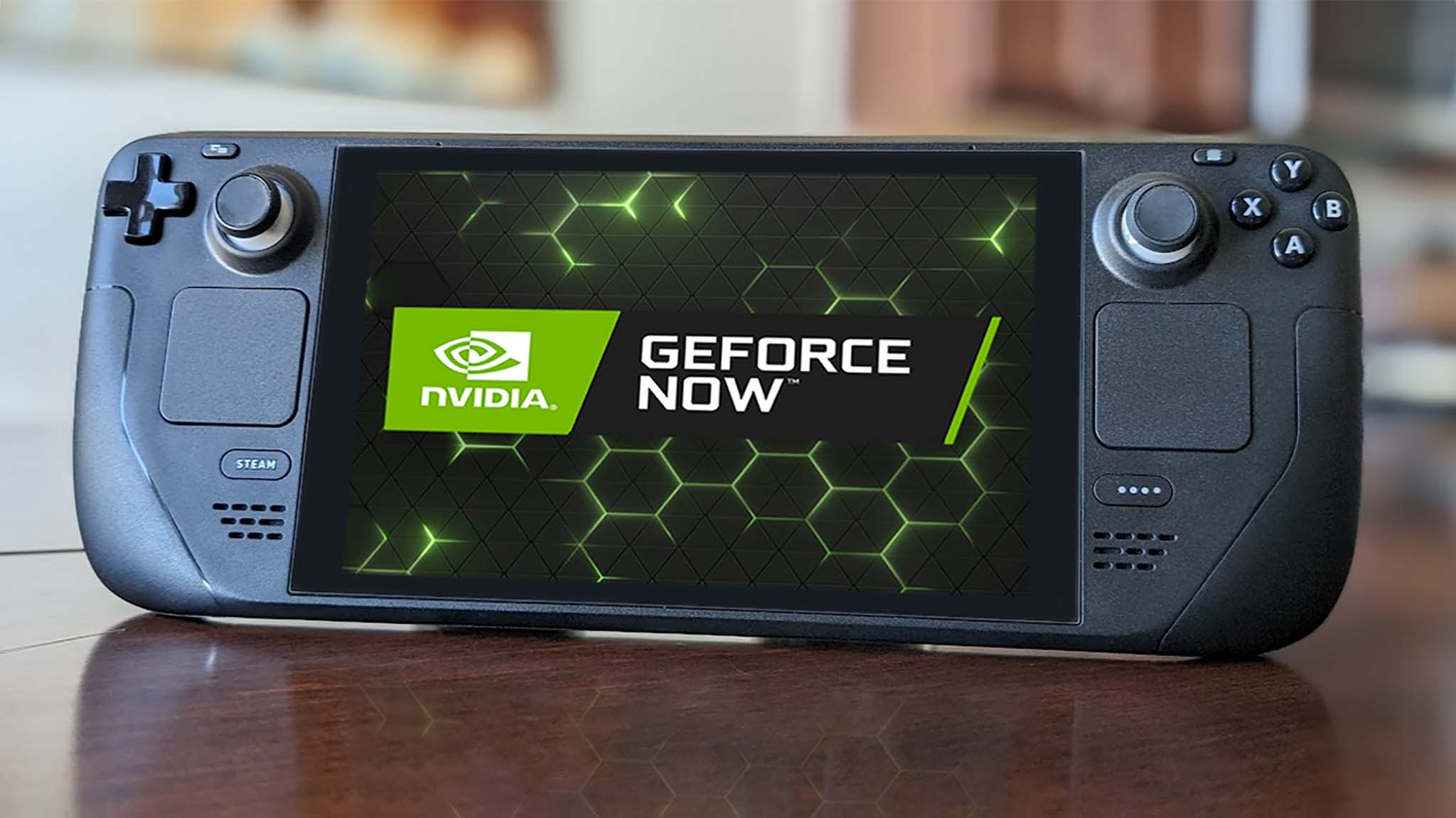Despite the rise of cloud storage, flash drives remain a popular way to store important documents, backups of your music collection, and any other parts of your digital life you'd rather not leave in the hands of the internet. One area that doesn't get enough attention is the ability to use flash drives as quasi-permanent extra storage for your PC, whether it be a laptop or a desktop. An increasing number of low-profile USB flash drives on the market makes that prospect even more tempting.
That's where the Samsung FIT Plus comes in. It's one of the smallest flash drives out there right now, making it a great "set it and forget it" option. Even better, it's rated for very fast speeds (for flash drive standards, anyway). But is it worth checking out? Read on to find out.
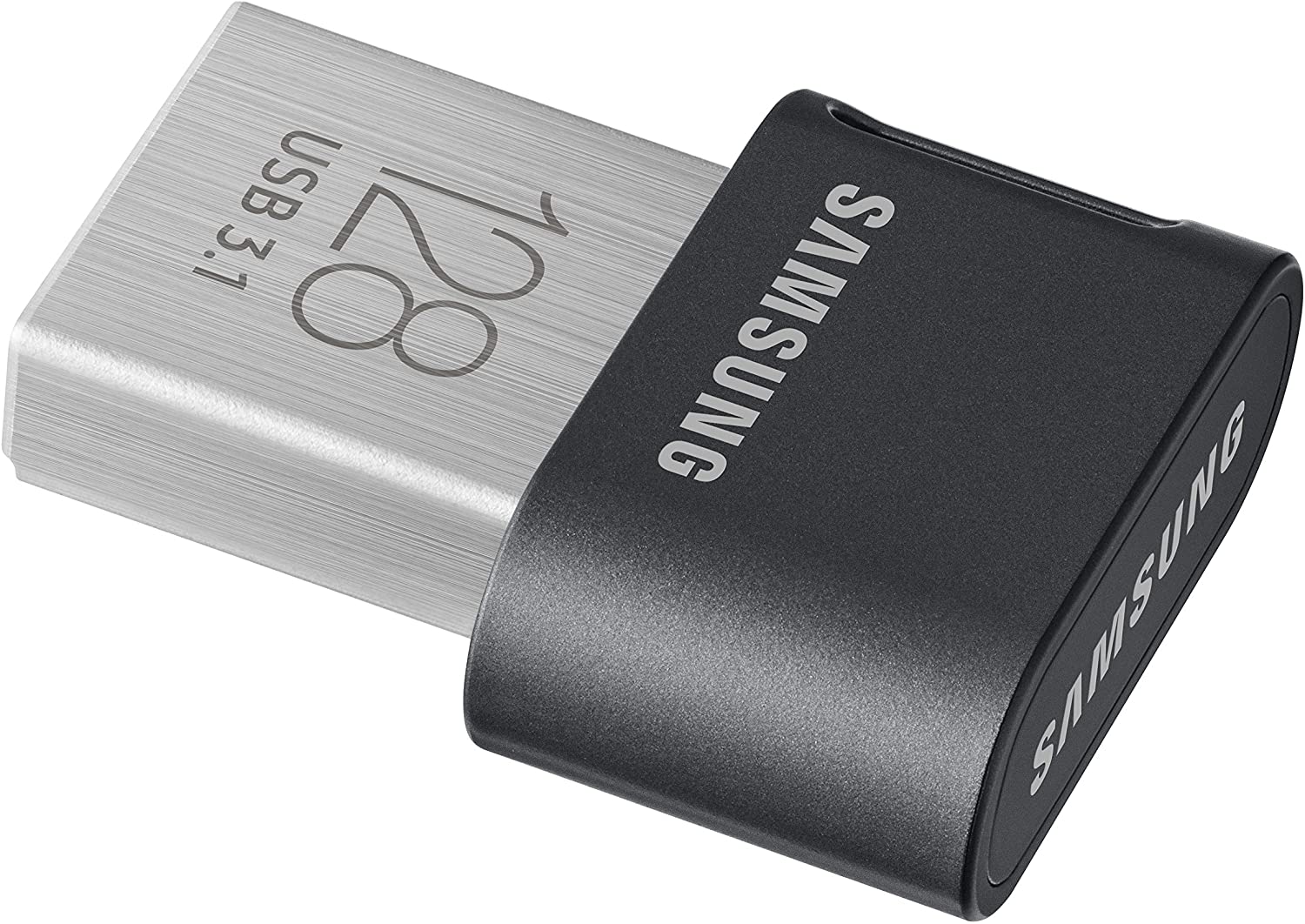
Bottom line: The Samsung FIT Plus is a great piece of kit to add to your laptop for an extra bit of storage, just don't expect it to be your workhorse for any intense tasks. The four sizes, ranging from 32GB to 256GB, are also super affordable.
Pros
- Very fast read and write speeds
- Sleek low-profile design
- Sturdy build
- USB 3.1
Cons
- No activity light
- Small size makes it very easy to lose
- Hard to remove due to its size
Samsung FIT Plus USB 3.1 flash drive: Price and availability
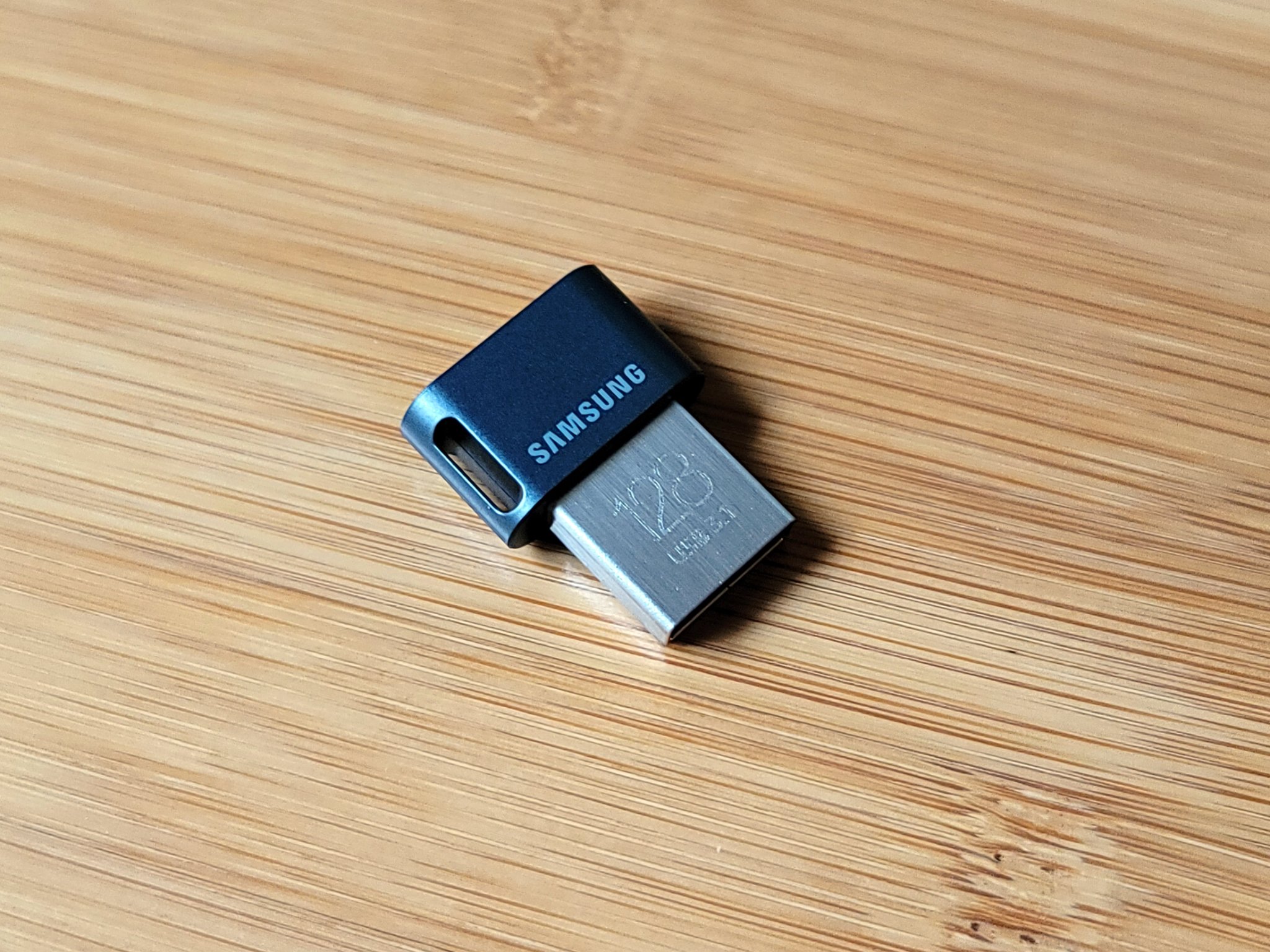
The Samsung FIT Plus comes in four different sizes. You can pick it up in 32GB, 64GB, 128GB, or 256GB capacities. Pricing starts at $10 for the 32GB size and ranges up to $42 for the 256GB size.
The Samsung FIT Plus is generally available on Amazon and Samsung's own online shop in all four flavors. You'll frequently spot discounts across both stores. The 128GB model reviewed here, for example, was discounted from $40 to $22 when I purchased it for this review.
Samsung FIT Plus USB 3.1 flash drive: What's good
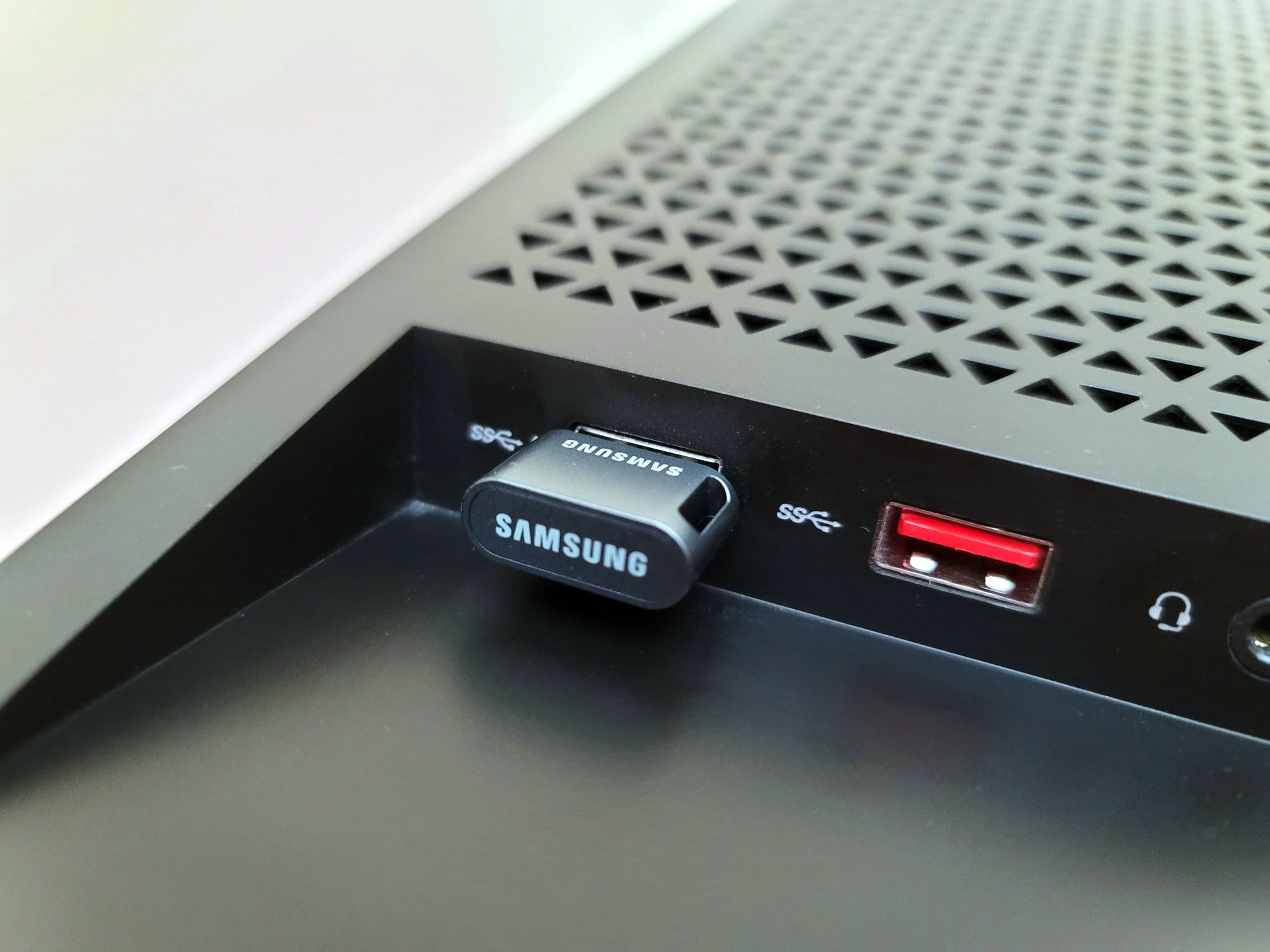
The Samsung FIT Plus is nearly as compact as you can get for a low-profile flash drive. Because of its small stature, the Samsung FIT Plus is an excellent candidate for anywhere you'd want to insert semi-permanent removable storage. For many, this might be a cheap way to add more storage to an aging laptop. For others, the Samsung FIT Plus could make a great little drive to store your music collection to listen to in the car (if you've got one with a USB port).
Either way, it's a versatile little drive. It's also built very well, all things considering. Because it's so small, you can't really put stress on it like you can some other, larger drives. However, Samsung has given the drive a bit of a premium feel, nonetheless. It's built to easily blend in, whether on a budget laptop or premium PC.
The Samsung FIT Plus is built to blend in, whether on a budget laptop or a premium PC.
Another area that makes this drive pretty great is speed. In my testing, the drive lived up to its maximum 400 MB/s read speed in a synthetic benchmark over USB 3.1. Write speeds are always much slower, but the drive still managed to hit around 60 MB/s in both a synthetic benchmark and when transferring a 5GB file in a more real-world test.
All the latest news, reviews, and guides for Windows and Xbox diehards.
While you could run your Steam library off of this drive (I can confirm DOOM ran pretty well), those speeds are nowhere near what you'd see with a dedicated SSD. However, as a storage drive for documents, music, and any other files that don't require blisteringly fast real-time access, it's a fantastic little drive.
Samsung FIT Plus USB 3.1 flash drive: What's not good
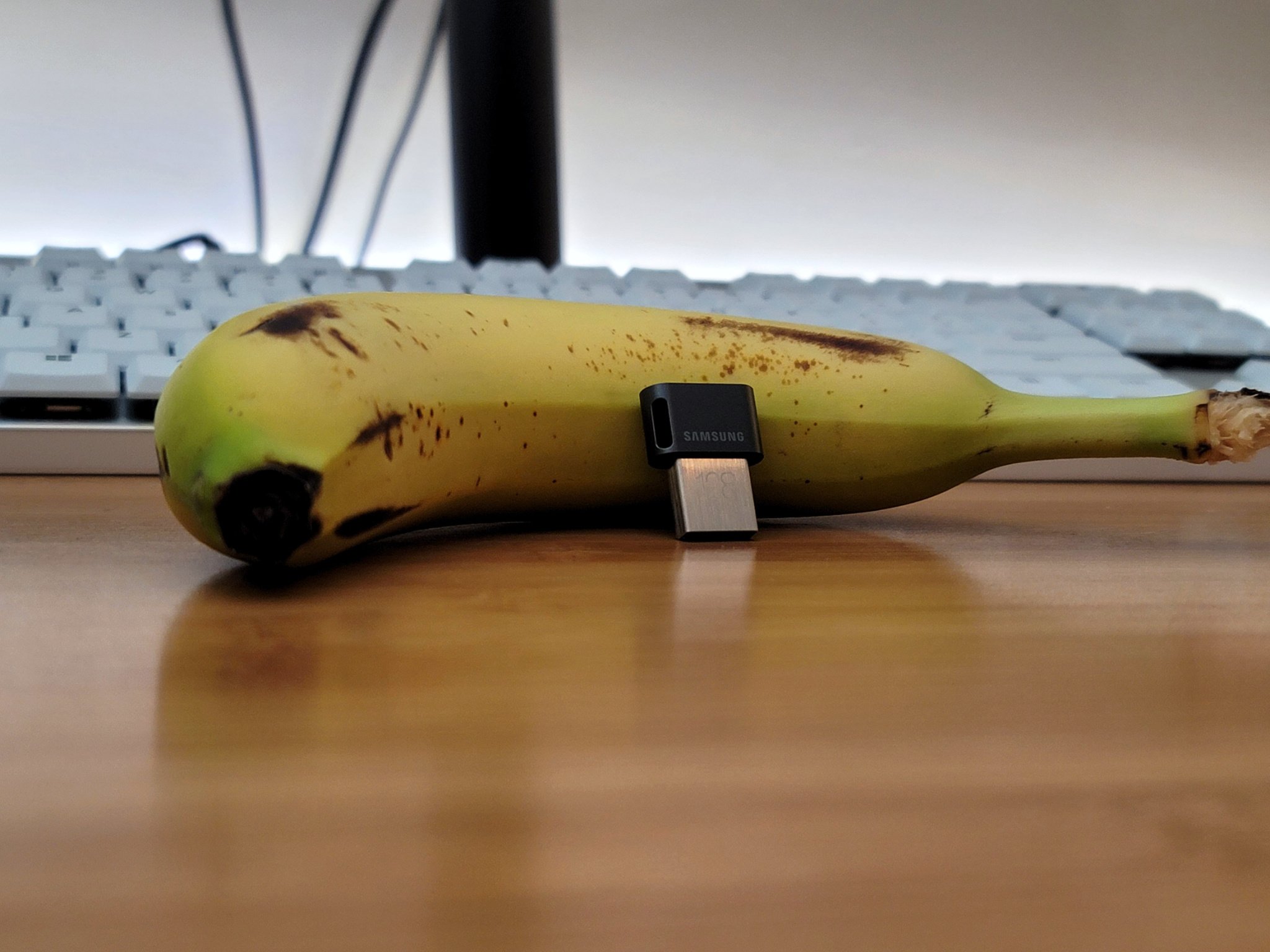
Samsung has nailed it when it comes to the design, look, feel, and speed of this drive. However, there are a few minor points worth noting before you toss your money at this drive. First, there's no activity light. That's not a major omission by any means, and it might even be an advantage if this drive is going to live in one of your laptop's USB ports. However, it's something that is present on a number of other USB drives, and it helps to confirm the drive isn't doing anything if you're about to pull it out without ejecting it from your system tray (as is good practice).
There's also the size to consider. It's a bit of a double-edged sword in that it's great for blending in, but terrible for actually keeping track of the drive. Thankfully, if you are going to be taking it in and out of a PC, there's a dedicated lanyard-slash-keychain slot on the drive so you can always keep it tethered to something else. If, however, you're like me and have lost countless standard-size flash drives over the years, the diminutive size of this one may be a turnoff.
Further, the small size and design of the Samsung FIT Plus makes it pretty hard to remove from tight spaces. You'll likely be okay if you're working with a laptop, where you can easily and firmly grip it. However, the lack of a lip or any sort of grippy finish on the drive makes it hard to remove from a desktop system, where you may be working around cables and other USB devices.
Finally, it's worth noting that some user reviews have reported random disconnects with this drive, forcing them to remove it and re-insert it to get it to show up in their drive list again. I haven't run into this issue, and I suspect it may have something to do with a Windows system setting tripping up somewhere. Though my unit didn't display this behavior, and it appears it was more common on older revisions, it's something worth bearing in mind.
Samsung FIT Plus USB 3.1 flash drive: Competition
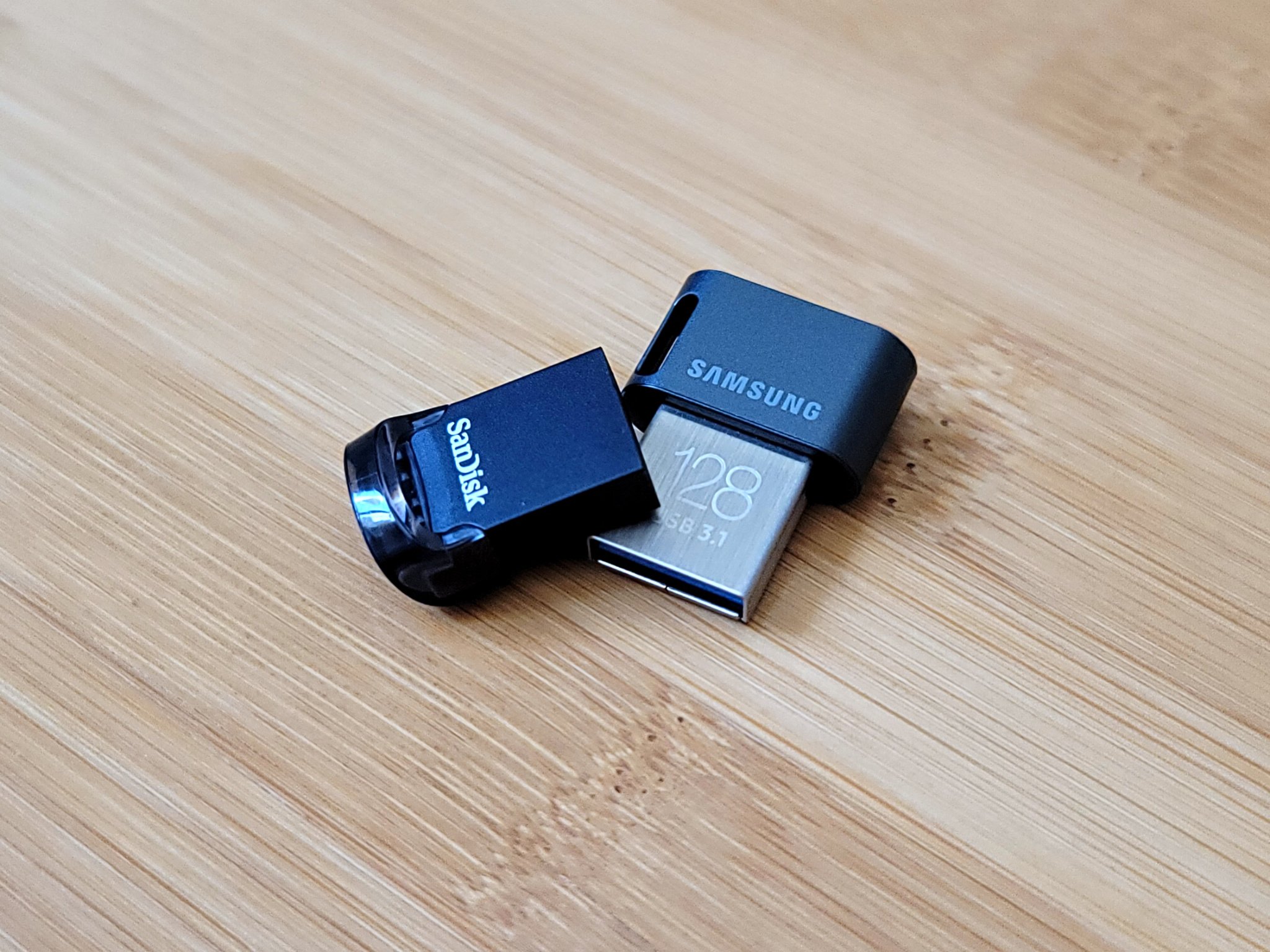
While the Samsung FIT Plus is an excellent slim USB flash drive, it's not the only one out there. One that consistently gets high marks is the SanDisk Ultra Fit. Not only is it of a smaller stature, but it comes in more sizes (16GB up to 512GB) and is a tad cheaper. Despite being a USB 3.1 drive, its only rated at read speeds up to 130 MB/s, which is quite a bit lower than the Samsung FIT Plus. However, SanDisk designed the Ultra Fit with a lip that makes it much easier to remove.
Another low-profile option in the USB 3.1 space is the PNY Elite-X Fit. It's similar in stature to the Samsung FIT Plus and is available in 64GB, 128GB, 256GB, and 512GB sizes. You're dealing with a slower 200 MB/s rated read speed here, but it also comes with a grippy texture that makes it easier to remove from your PC.
Samsung FIT Plus USB 3.1 flash drive: Should you buy it?
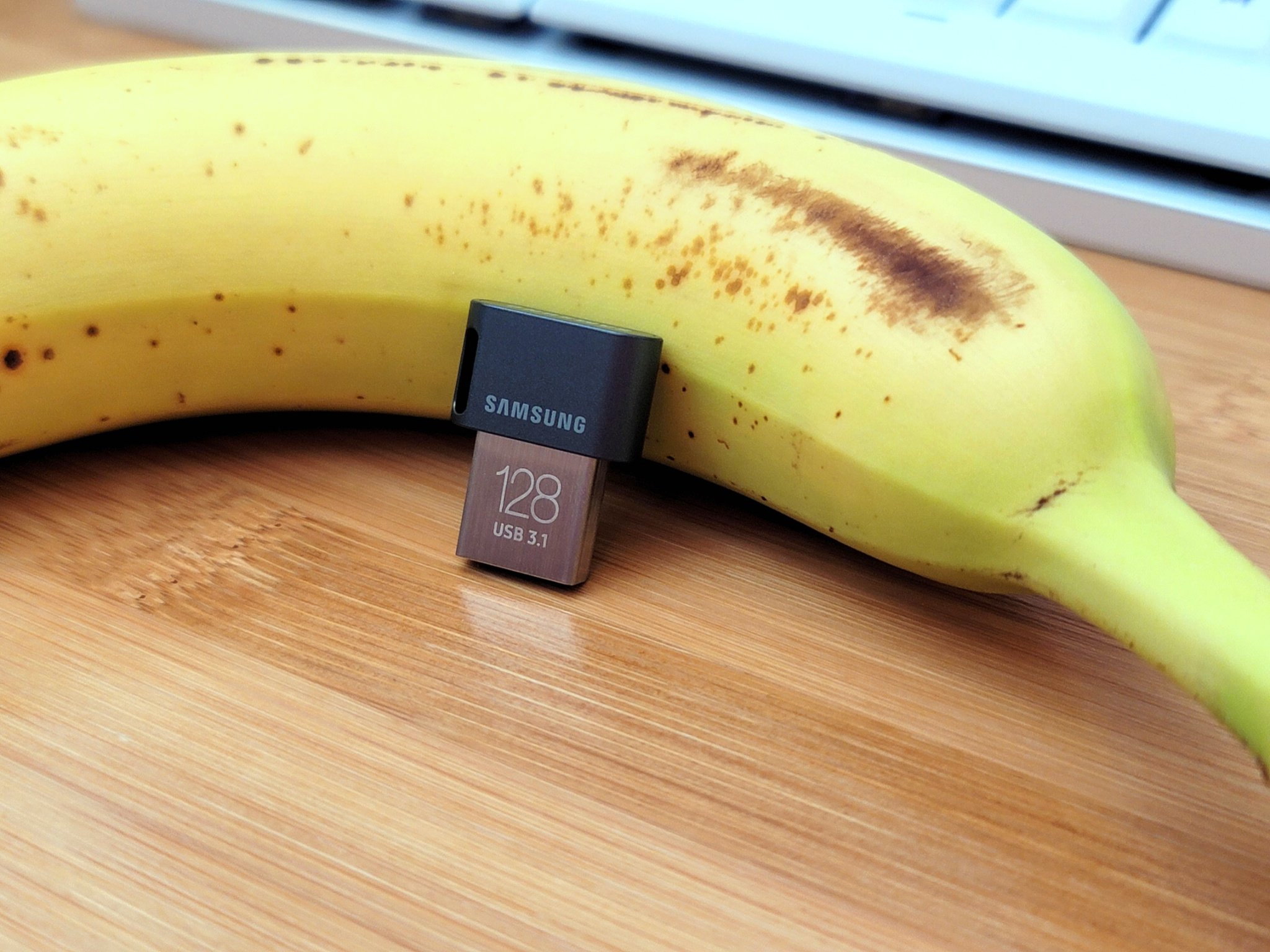
You should buy this if ...
- You want a low-profile flash drive
- You want some of the fastest speeds available in a flash drive
- You want to use it as semi-permanent storage
You shouldn't buy this if...
- You need an activity light
- Having the fastest speed isn't a priority
- You frequently need to remove and re-insert the drive
- You need more robust SSD speeds
The Samsung FIT Plus is one of the best USB flash drives you can snag if you want a low-profile speed demon. For anyone looking for a semi-permanent bit of extra storage to add to a laptop, PC, or even network storage, it's a low-cost option that should work well. Flash drives definitely aren't good options for more robust applications, however, so go with one of the best external SSDs if you need something that can handle more intense workloads than storing and retrieving files.
While other flash drives may undercut the Samsung FIT Plus in price, it's still a great value. We're talking a difference of a couple of dollars here and there, depending on the size, for a drastic increase in speed over its competitors. It's no SSD, but it should suffice for anyone requiring a reliable place to stash away important files.

Dan Thorp-Lancaster is the former Editor-in-Chief of Windows Central. He began working with Windows Central, Android Central, and iMore as a news writer in 2014 and is obsessed with tech of all sorts. You can follow Dan on Twitter @DthorpL and Instagram @heyitsdtl.
